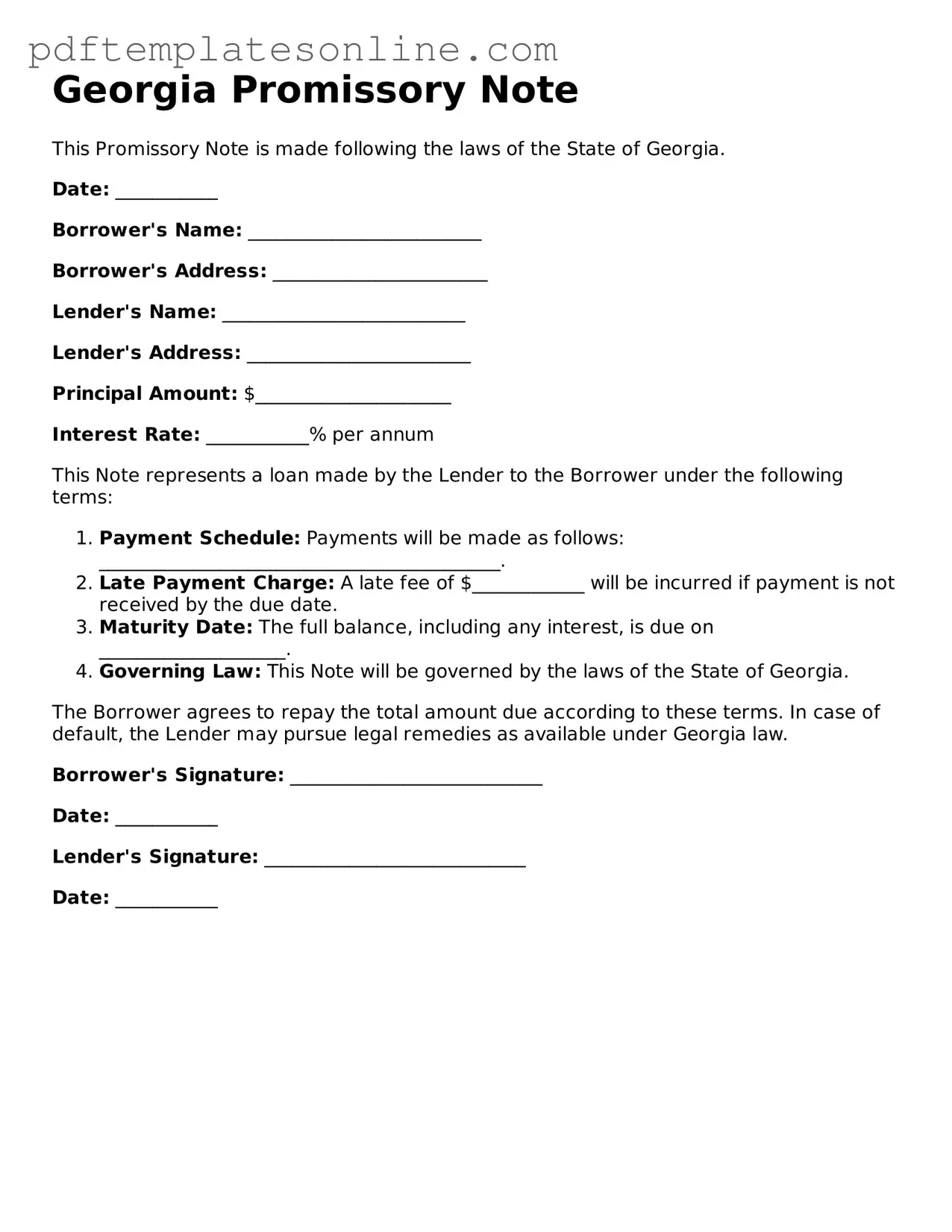Filling out a Georgia Promissory Note form can seem straightforward, but many individuals make common mistakes that can lead to complications down the line. One frequent error is neglecting to include all necessary details about the borrower and lender. It's essential to provide full names, addresses, and contact information. Omitting even a small piece of this information can create confusion and complicate enforcement of the note.
Another mistake often made is failing to specify the interest rate clearly. The interest rate should be stated explicitly, including whether it is fixed or variable. If this detail is left vague, it may lead to disputes later regarding how much interest is actually owed. Clarity is key; both parties should know exactly what they are agreeing to.
Some individuals also overlook the importance of defining the repayment terms. This includes not only the amount due but also the schedule for payments. Is it monthly, quarterly, or a lump sum? Without clear terms, misunderstandings can arise, potentially leading to late payments or defaults. A well-defined repayment schedule is vital for maintaining a positive lender-borrower relationship.
Additionally, many people forget to include a late fee clause. Life can be unpredictable, and sometimes payments are missed. Including a clause that outlines the consequences of late payments can protect both parties and encourage timely repayment. Without this clause, the lender may find it difficult to enforce any penalties or fees for late payments.
Lastly, failing to sign and date the document is a common oversight. Even the most meticulously filled-out Promissory Note is invalid without the signatures of both parties. Ensure that both the borrower and lender sign and date the form to make it legally binding. This final step is crucial, as it confirms that both parties agree to the terms laid out in the document.
